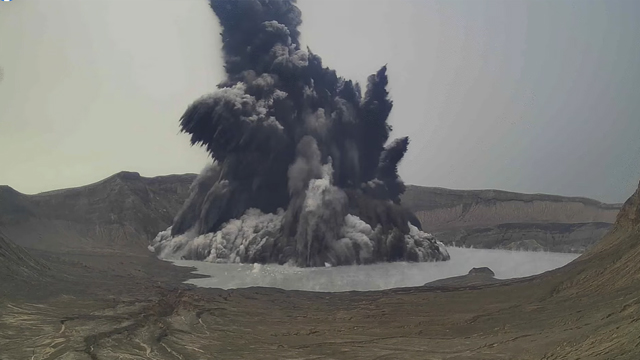
(SPOT.ph) It was early last year when most of Metro Manila and nearby provinces on alert as Taal Volcano produced an ash plume on January 12, 2020, then spewed a lava fountain on January 13, 2020. Everything eventually calmed down—until today, July 1 as a "phreatomagmatic eruption" was seen and recorded at the main crater from 3:16 p.m. to 3:21 p.m.
Because of this development, the Philippine Institute of Volcanology and Seismology is raising the alert status of Taal from Alert Level 2 (increasing unrest) to Alert Level 3 (magmatic unrest). This comes after the main crater "generated a short-lived dark phreatomagmatic plume one kilometer-high with no accompanying volcanic earthquake," according to their Taal Volcano Bulletin released at 3:37 p.m.
[facebook:https://ift.tt/2SJpwz4]
What is a phreatomagmatic eruption?
Phreatomagmatic eruptions happen when magma or lava interact with external water, such as ground water, lake water, sea water, or surface runoff. In the case of Taal Volcano's eruption, we can see in the video the interaction with water that pooled in the main crater. "There is magmatic intrusion at the Main Crater that may further drive succeeding eruptions," the Taal Volcano Bulletin added.
For comparison, the Taal's first eruption on January 12, 2020 that brought ashfall all the way to the Metro was a phreatic explosion. This type of volcanic eruption happens when there is no magma present, and only the heated ground water drives the explosion of ash and rocks. The second eruption on January 13, 2020, on the other hand, was called a strombolian eruption. This includes the ejection of lava tens or hundreds of meters in the air, which causes a shower of lava fragments. Back then, the alert level was raised to four.
What should we do?
The Philippine Institute of Volcanology and Seismology (PHIVOLCS) already said on Wednesday, June 30 that volcanic fog from Taal Volcano has reached Metro Manila and Central Luzon provinces. This contains volcanic gas like sulfur dioxide, which can irritate the eyes, throat, and respiratory tract, so it's best for affected residents to stay indoors, keep the windows and doors closed, wear N95 or medical-grade face masks when going out, and drink plenty of water.
In addition, PHIVOLCS recommends that residents of Taal Volcano Island and high-risk barangays of Agoncillo (Bayaga, Bilibinwang) and Laurel (Gulod, Boso-Boso, Lakeshore Bugaan East) be evacuated due the possibility of pyroclastic density currents and volcanic tsunami. Communities around Taal Lake are also advised to take precautionary measures.
PHIVOLCS, in a Facebook live on July 1, clarified that as of the moment, there is no threat of ashfall since the eruption is contained within the main crater. "Mas nagri-release ng magma, mas maigi nga 'yon kasi 'yong eruption magiging mas mahina," PHIVOLCS Director Dr. Renato U. Solidum also explained.
PHIVOLCS' Volcano Monitoring and Eruption Prediction Division Chief Antonia Bornas also clarified that there's little to no possibility of a similar scenario as what happened in January 2020. This is because the volcano's topography is now less pressurized.
[ArticleReco:{"articles":["86659","86654","86647","86652"], "widget":"Hot Stories You Might Have Missed"}]
Hey, Spotters! Check us out on Viber to join our Community and subscribe to our Chatbot.
Source: Spot PH
No comments:
Post a Comment